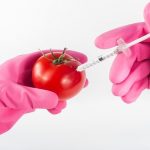Getting a genetically modified (GM) bacterium or yeast approved in Europe is a complex and tightly regulated process. The approval procedure is governed by European Union (EU) regulations to ensure that GM organisms (GMOs) are safe for human health, the environment, and biodiversity. Here’s an overview of the key steps, the length of time, and the hurdles involved:
1. Regulatory Framework
- Legislation: The main legal framework for GMOs in the EU is Regulation (EC) No 1829/2003 on GM food and feed, and Directive 2001/18/EC on the deliberate release of GMOs into the environment. There are also specific regulations for GM microorganisms (GMMs) used in food, pharmaceuticals, and industrial processes.
2. Pre-Application Phase
- R&D Compliance: GM bacteria or yeast must be developed in compliance with EU biosafety regulations. Research labs must follow contained use regulations (Directive 2009/41/EC) to ensure that any work with GMOs does not harm the environment or human health.
- Risk Assessment Planning: Before submitting a formal application, the applicant needs to prepare a comprehensive risk assessment that includes detailed data on the safety of the GM microorganism.
3. Application Submission
- Application to EFSA: The company or research entity must submit an application to the European Food Safety Authority (EFSA) or the relevant national authority, depending on the intended use (e.g., food, feed, or environmental release). This submission includes:
- Molecular characterization of the GM microorganism.
- Data on stability and inheritance of the genetic modification.
- Safety studies (toxicology, allergenicity, etc.).
- Environmental risk assessment.
- Detailed production and processing methods.
- Evidence of compliance with labeling requirements.
4. EFSA Evaluation
- Initial Validation: EFSA conducts an initial assessment to check if the application contains all the necessary information.
- Scientific Risk Assessment: EFSA’s GMO Panel conducts a thorough scientific risk assessment, reviewing:
- Potential adverse effects on human health and the environment.
- Risks of gene transfer to non-target organisms.
- Possible emergence of antibiotic resistance (especially if antibiotic-resistance genes are used).
- Environmental persistence and biodegradability.
Timeframe: This stage can take around 12 to 18 months, though it may take longer depending on the complexity of the dossier and the need for additional studies or data.
5. Public Consultation
- Public Review and Comments: Once EFSA delivers its opinion, the report is made public. The European public and scientific community are invited to submit comments during this period. National regulatory bodies also give their opinions.
- Addressing Objections: If concerns are raised, the applicant may need to provide additional data or revise aspects of the application.
6. Risk Management
- European Commission Decision: The risk assessment report is sent to the European Commission, which coordinates the risk management process. This includes consulting the Standing Committee on Plants, Animals, Food and Feed.
- Vote by EU Member States: The committee, comprising representatives of the member states, votes on whether to approve the GM microorganism. A qualified majority (55% of member states representing at least 65% of the EU population) is required for approval.
If no majority is reached, the decision is escalated to the Appeal Committee, and eventually, the European Commission may make a final decision.
7. Post-Approval Monitoring
- Traceability and Labeling: If approved, the GM microorganism must be traceable throughout the production and supply chain. Products containing GM microorganisms are subject to strict labeling requirements under EU law.
- Post-Marketing Surveillance: Monitoring for any long-term environmental or health impacts is required, and the approval may be reviewed if new risks emerge.
8. Timeframe
- Overall Duration: The entire process can take anywhere from 3 to 6 years (or longer), depending on the complexity of the case, the amount of data required, and any public or political concerns that arise during the approval process. Delays can occur due to requests for additional information or challenges during member state voting.
9. Key Hurdles
- Complexity of Risk Assessment: The need for extensive, scientifically robust data makes the application process lengthy and costly.
- Public and Political Opposition: GMOs, in general, face significant public opposition in Europe, which can influence the approval process. Some member states have stricter national rules or moratoria on GM organisms.
- Regulatory Delays: Member state disagreements or appeals during voting can extend the timeframe significantly.
Conclusion
Getting a GM bacterium or yeast approved in Europe requires rigorous scientific validation, extensive safety assessments, and compliance with complex regulatory standards. The process is resource-intensive and time-consuming, with multiple potential hurdles ranging from technical issues to political and public concerns.


Leave a Reply